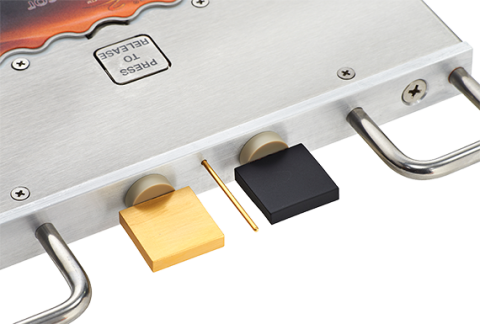Consumers expect their favorite baked goods to taste and look the same every time they purchase them. Achieving this level of uniformity requires precise control over the baking process, and digital heat flux sensors for bakery processes from Reading Thermal have emerged as a crucial tool. These sensors, with their precision in providing detailed insights into the thermal energy transfer within ovens, empower bakers to optimize their processes and maintain high product consistency.
The Basics
Digital heat flux sensors, unlike traditional temperature sensors that merely measure ambient temperature, offer a unique advantage. They capture the dynamic flow of thermal energy, providing a more comprehensive understanding of heat distribution and absorption by the baked goods. This crucial data empowers bakers to make informed adjustments to their processes, enhancing product consistency.
The Importance of Heat Flux in Baking
Heat flux, a pivotal element in baking, directly influences the rate of heat transfer to the product. This, in turn, impacts the texture, moisture content, and overall quality of the baked goods. Inconsistent heat flux can lead to uneven baking, resulting in products that are overcooked on the outside but undercooked on the inside or vice versa. By monitoring and controlling heat flux, bakers can ensure that every product receives the same amount of thermal energy, leading to consistent results.
How Digital Heat Flux Sensors Enhance Product Consistency
Digital heat flux sensors provide real-time data on the heat transfer within the oven. This immediate feedback allows bakers to make prompt adjustments to the baking parameters, such as temperature and airflow, ensuring that the products are baked uniformly. For example, suppose the sensors detect a drop in heat flux in a particular oven area. In that case, the baker can adjust the settings to compensate for this discrepancy, preventing any variations in the final product.
Heat flux sensors also generate detailed thermal profiles of the baking environment, highlighting how heat is distributed throughout the oven. These profiles help bakers identify hotspots and cold spots, which can cause uneven baking. By understanding these thermal patterns, bakers can reposition products within the oven or adjust baking times to achieve a more uniform heat distribution.
With the data provided by digital heat flux sensors, bakers can fine-tune their baking parameters to optimize the heat transfer to the products. This includes adjusting oven temperatures and baking times and placing the products in the oven. Such precise control ensures that each batch of baked goods is exposed to the same thermal conditions, enhancing consistency.
Improving Recipe Development
Heat flux sensors play a crucial role in the development of new recipes. They enable bakers to experiment with different baking parameters and observe their effects on heat transfer. This experimentation fosters the creation of robust recipes that yield consistent results under varying conditions. Once a recipe is perfected, the same heat flux parameters can be applied in production, ensuring uniformity across batches.
Enhanced Quality Control
Incorporating heat flux sensors into the quality control process helps maintain high standards. By regularly monitoring heat flux during baking, quality control teams can detect deviations from the established thermal profiles and address them immediately. This proactive approach, supported by the effectiveness of the sensors, minimizes the risk of producing substandard products, giving the team a sense of confidence in their quality control measures.
Please call Reading Thermal at 610-678-5890 or contact us online for more information on our digital heat flux sensors for bakery processes.

